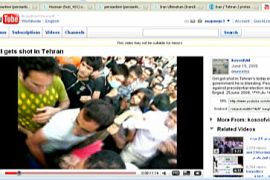
The role of new media in Iran
Have the rules of journalism been irreversibly bent to open the way for social media?
The aftermath of the Iranian presidential election took many by surprise and protests over the result made news headlines.
Within four days, Iranian authorities had clamped down on foreign media, sending some foreign correspondents away and restricting the movement and reporting of others.
This created a news vacuum which was quickly filled up by unconventional sources such as Youtube, Twitter, Flickr, blogs and mobile phone pictures.
They became a vital means of communication within the country and for many Iranians a lifeline to the outside world to tell their stories.
The Western media was forced to heavily rely on these sources. The information available was limited, and often the source and authenticity hard to verify.
Keep reading
list of 4 itemsUK returns looted Ghana artefacts on loan after 150 years
Fire engulfs iconic stock exchange building in Denmark’s Copenhagen
Inside the pressures facing Quebec’s billion-dollar maple syrup industry
This led the Iranian leadership to accuse the Western media of fueling the crisis.
So social media played an important – maybe even historic – role in Iran’s post-election debacle. But in the process, did it bite off a chunk of conventional media authority? And have rules of journalism been irreversibly bent to open the way for new media?
Inside Story presenter Sohail Rahman is joined by guests Baqer Moin, the former head of the BBC persian world service, Abbas Edelat, the founder of the campaign against sanctions and military intervention in Iran and a professor at Imperial College London, and Brian Stelter, a reporter at the New York Times newspaper.
This episode of Inside Story aired from Sunday, July 5, 2009.